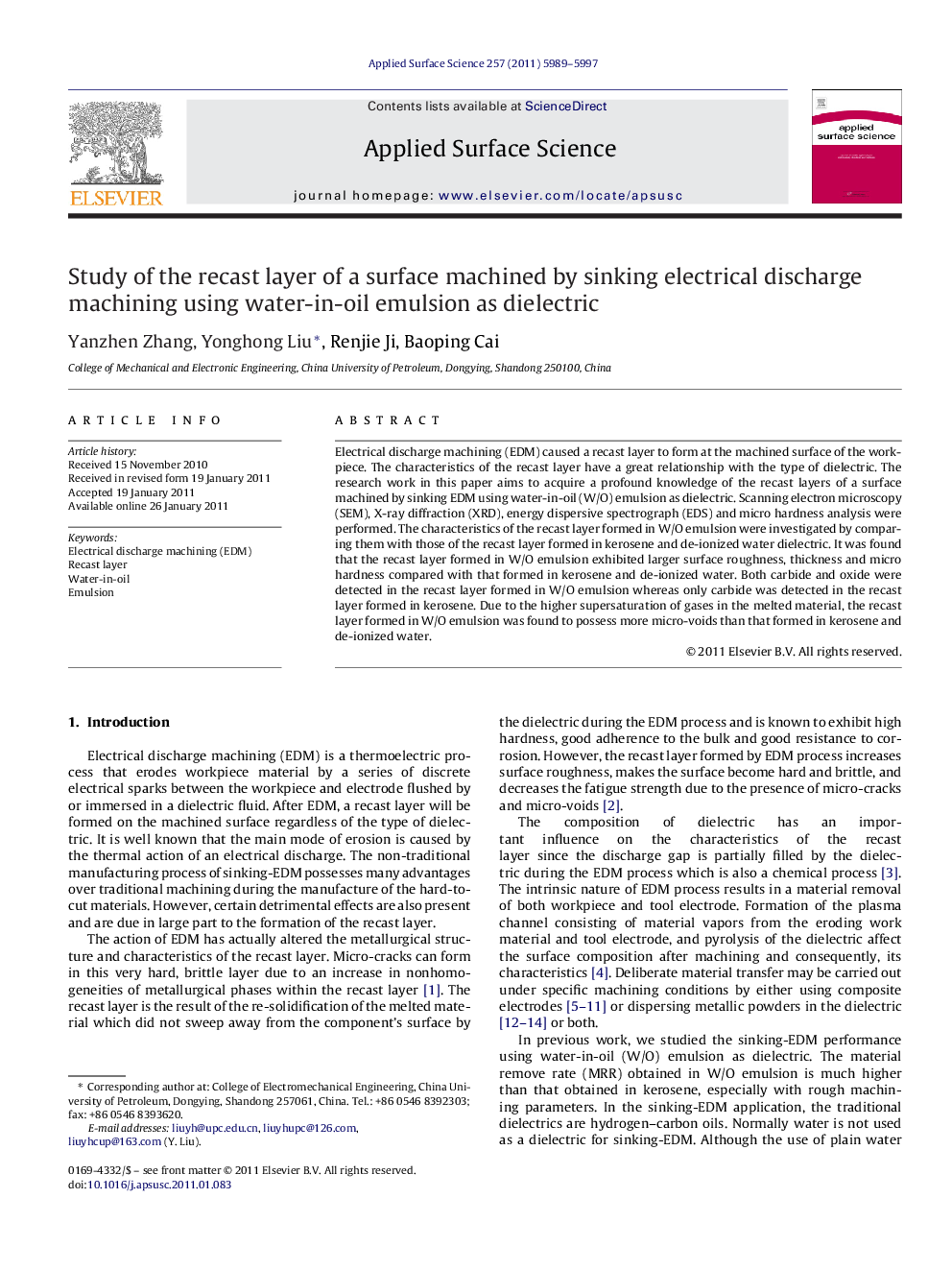| Article ID | Journal | Published Year | Pages | File Type |
|---|---|---|---|---|
| 5367664 | Applied Surface Science | 2011 | 9 Pages |
Electrical discharge machining (EDM) caused a recast layer to form at the machined surface of the workpiece. The characteristics of the recast layer have a great relationship with the type of dielectric. The research work in this paper aims to acquire a profound knowledge of the recast layers of a surface machined by sinking EDM using water-in-oil (W/O) emulsion as dielectric. Scanning electron microscopy (SEM), X-ray diffraction (XRD), energy dispersive spectrograph (EDS) and micro hardness analysis were performed. The characteristics of the recast layer formed in W/O emulsion were investigated by comparing them with those of the recast layer formed in kerosene and de-ionized water dielectric. It was found that the recast layer formed in W/O emulsion exhibited larger surface roughness, thickness and micro hardness compared with that formed in kerosene and de-ionized water. Both carbide and oxide were detected in the recast layer formed in W/O emulsion whereas only carbide was detected in the recast layer formed in kerosene. Due to the higher supersaturation of gases in the melted material, the recast layer formed in W/O emulsion was found to possess more micro-voids than that formed in kerosene and de-ionized water.
Research highlights⺠The properties of the recast layer formed in the sinking electrical discharge machining process using water-in-oil emulsion as dielectric were characterized and compared with that formed using kerosene and de-ionized water as dielectric. ⺠The composition and phases presented in the recast layer were identified. ⺠The formation of micro-crack and micro-void was discussed. ⺠Micro hardness of the recast layer was determined.
